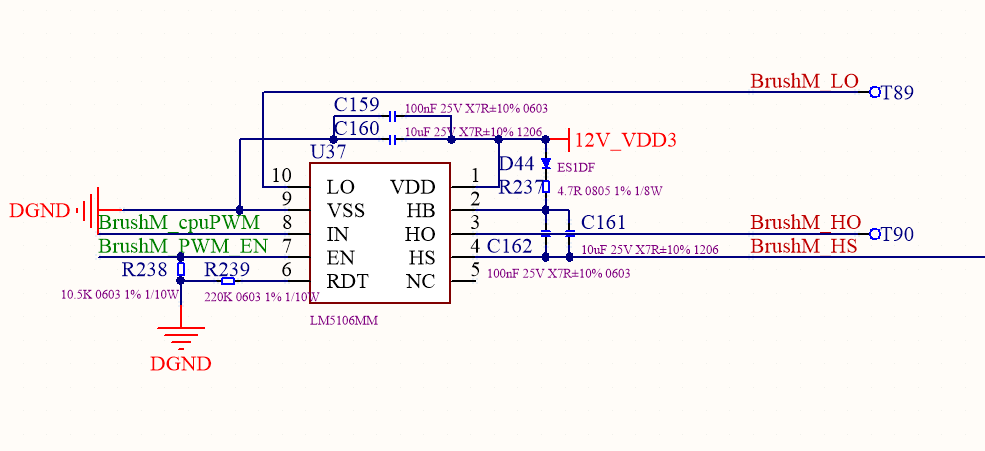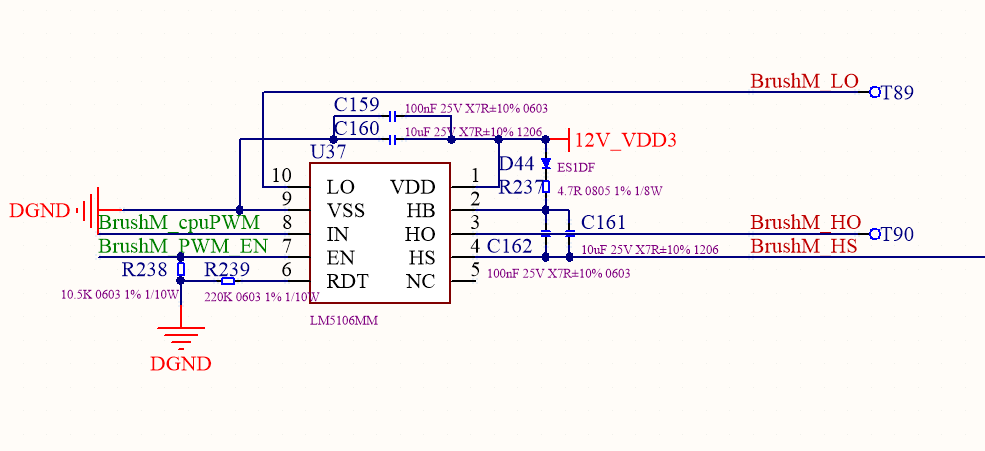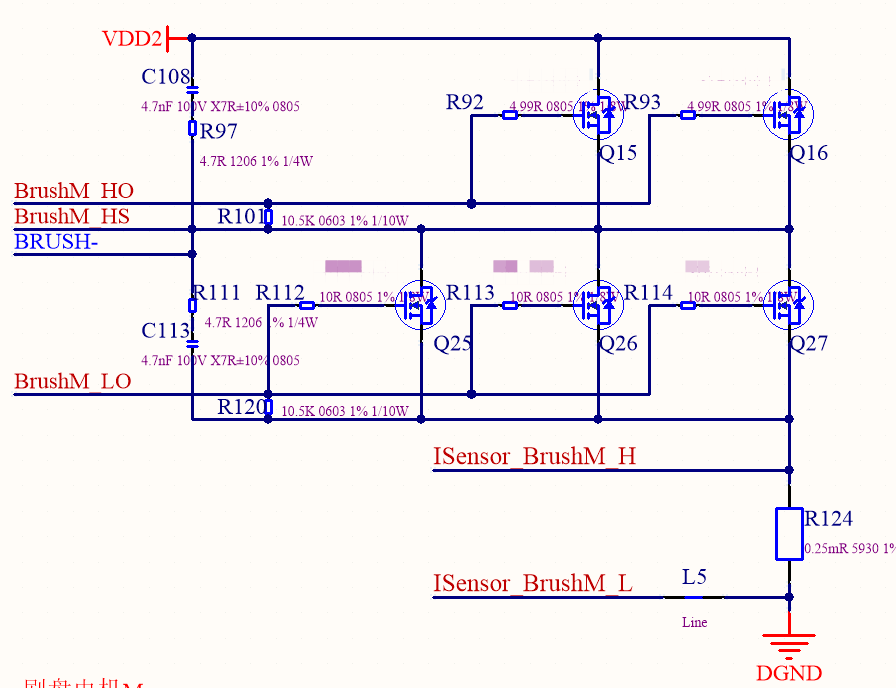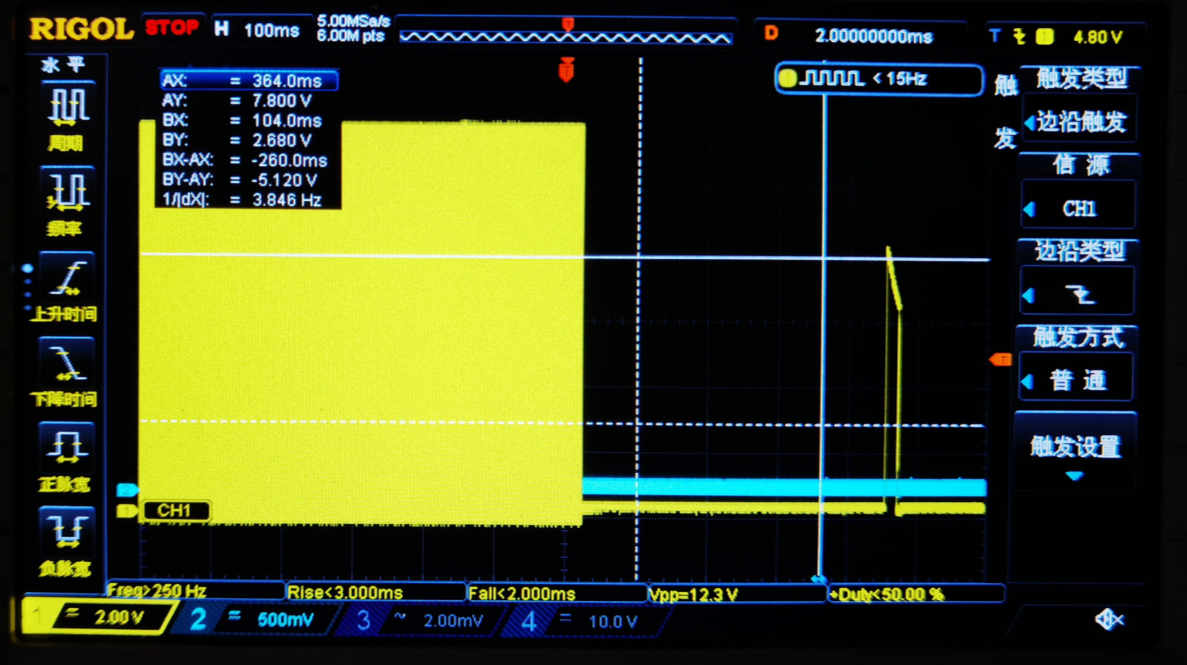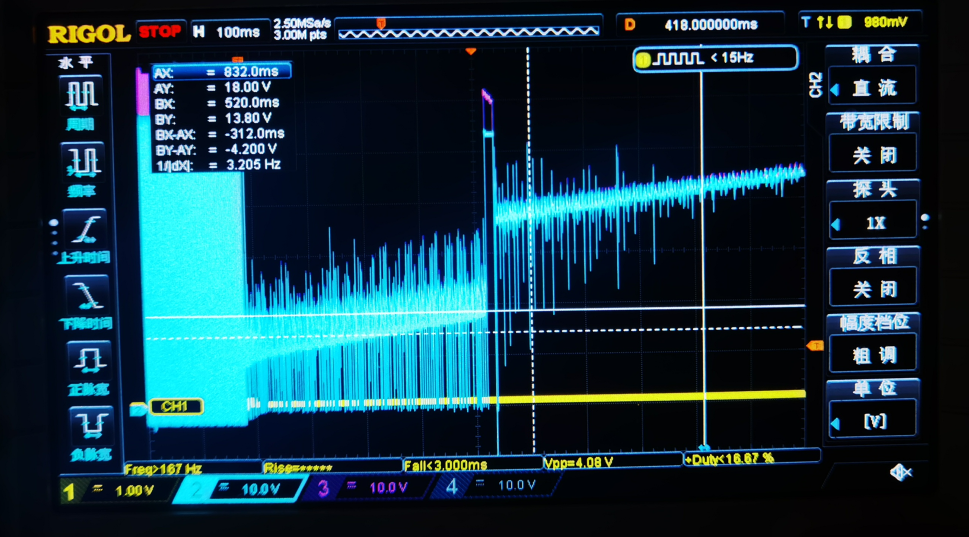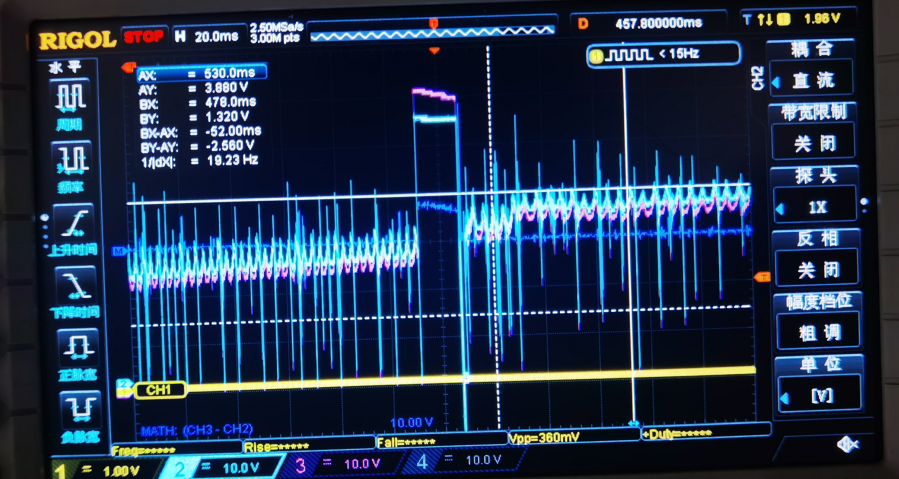Recently, lm5106 was used to design the half bridge driver of the motor. The driver drives a 600W motor with 500 rpm. When the power is cut off for the whole machine, the upper tube of the board bridge driver is damaged;
After measurement, when the power is off, the upper tube drive is opened wrongly for 20ms. At this time, VDD voltage is 0V, Hb voltage is 10V relative to HS voltage, Ho voltage is more than 6V relative to HS voltage, and VDD, en, in input are all 0V.
When VDD is 0V and Hb voltage is more than 10V relative to HS, Ho has more than 6V output relative to HS.
In this case, why does the driver chip have Ho and why does it have output? What should we do about it?
-
Ask a related question
What is a related question?A related question is a question created from another question. When the related question is created, it will be automatically linked to the original question.


